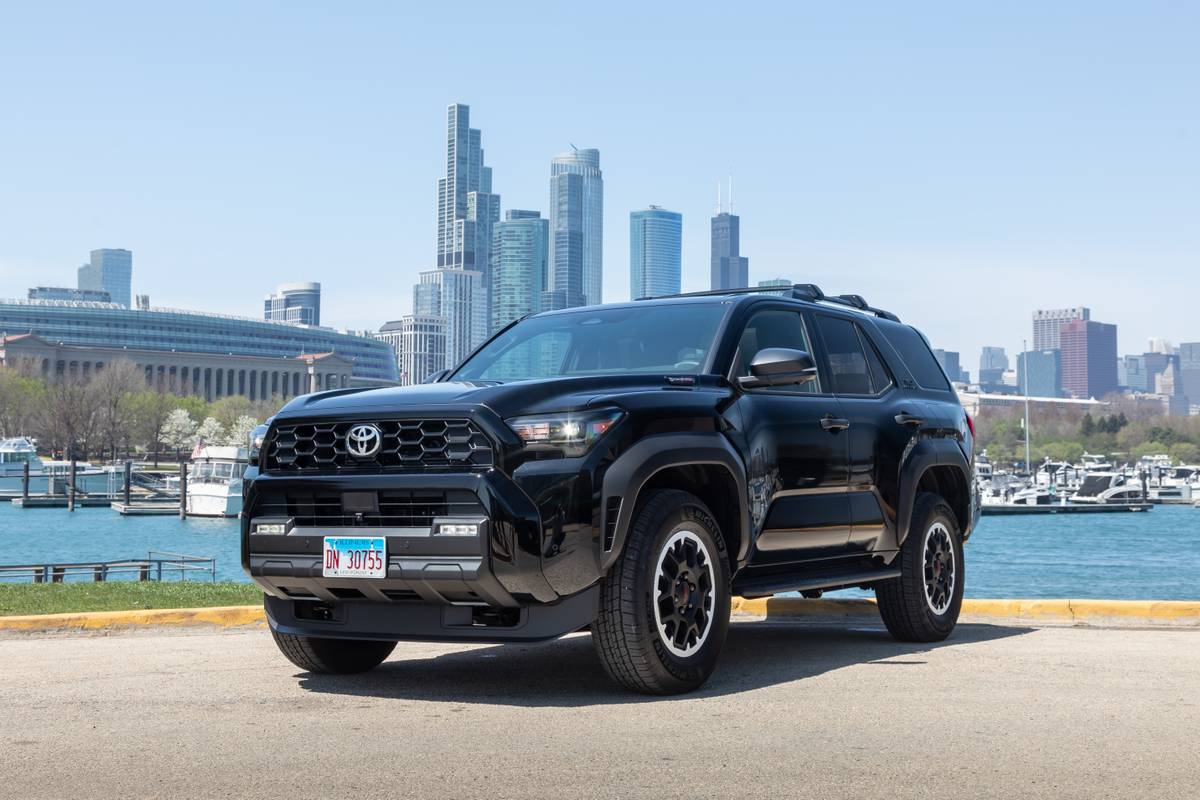2015 Toyota Prius c: Car Seat Check

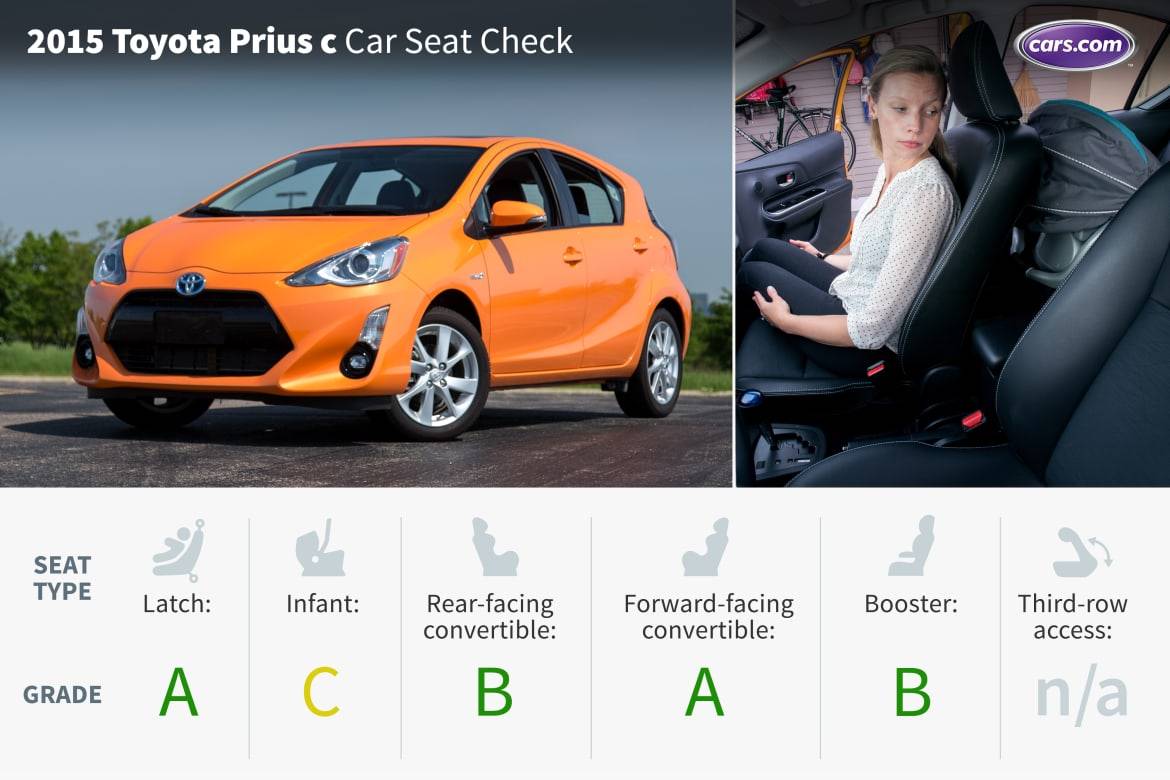
Toyota’s tiny hybrid has a lot of strengths – like excellent fuel economy and an affordable price – but roominess is not one of them. The 2015 Toyota Prius c should not be on families’ new-car shopping list if it needs to accommodate a rear-facing infant car seat. Although it was easy to connect to the hatchback’s Latch anchors, space was a big problem.
How many car seats fit in the second row? Two
What We Like
- It was easy to find and access the two sets of Latch anchors in the outboard seating positions. They sit behind vertical slits in the seat upholstery.
- The forward-facing convertible installed easily and fit well. To connect to the top tether anchor, we had to thread the strap between the seatback and cargo cover; you could also remove the cover.
What We Don’t
- The rear-facing infant car seat was easy to install but did not fit well. We had to move the front passenger seat all the way forward and then adjust the seatback to a more upright angle to accommodate the infant seat. The front passenger will not be comfortable in this seating position.
- We also had to move the front passenger seat forward to make room for the rear-facing convertible, but not nearly as much as with infant seat. Still, the test passenger’s knees were grazing the glove box.
- The rear seat bottom cushion is deep, so our booster sat at an angle. Also, the buckles are on floppy bases, but they don’t move around too much because of the deep wells in the seat cushions for buckle storage when not in use.
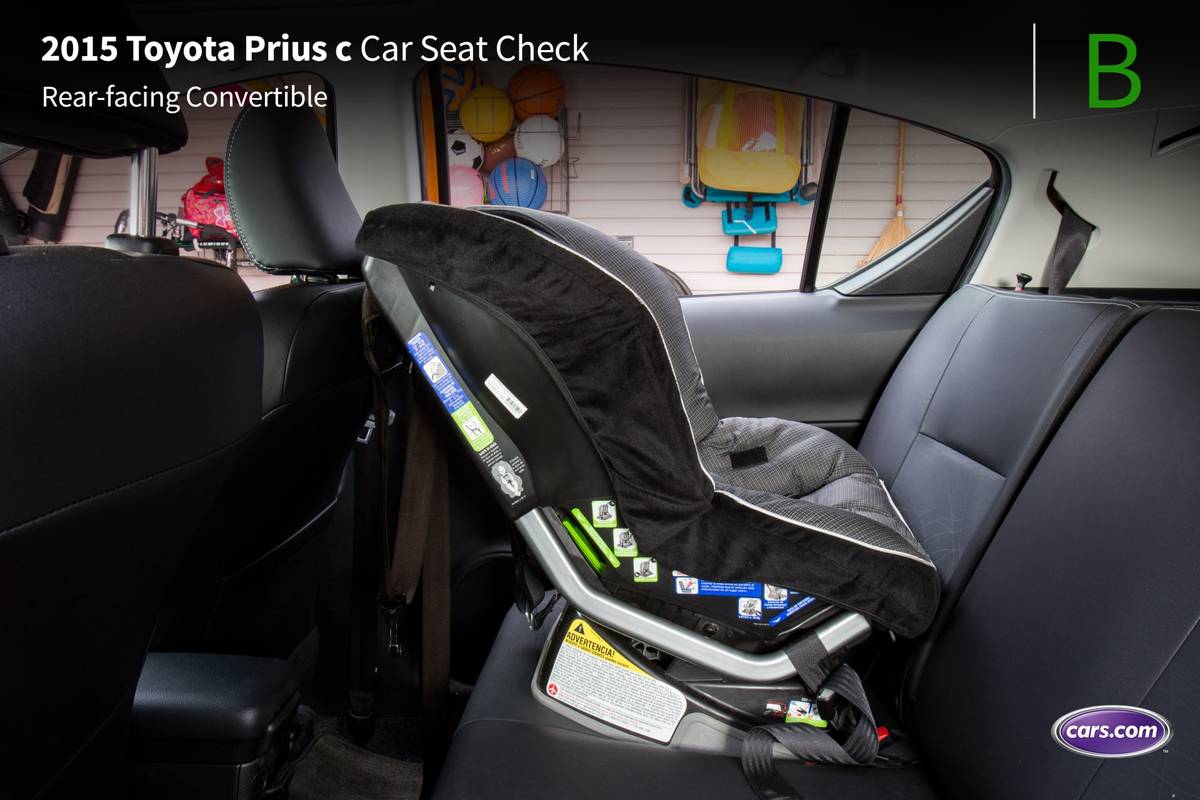
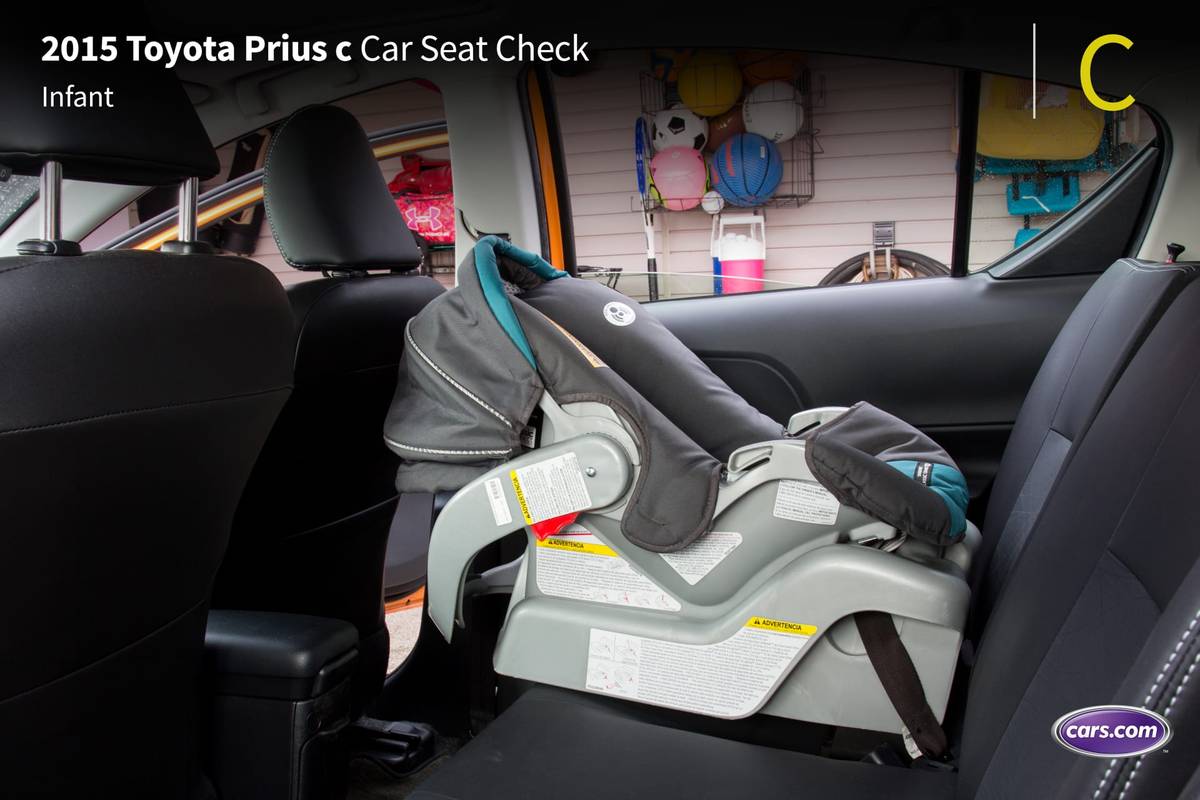
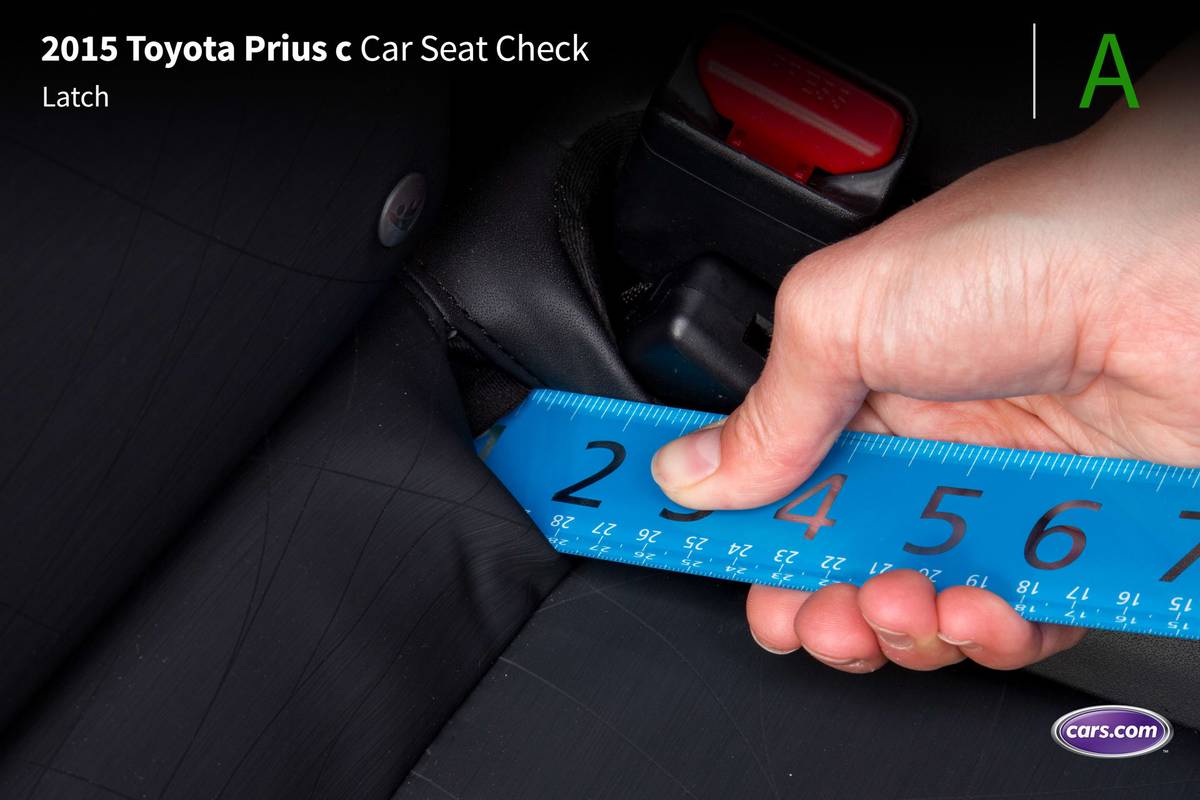
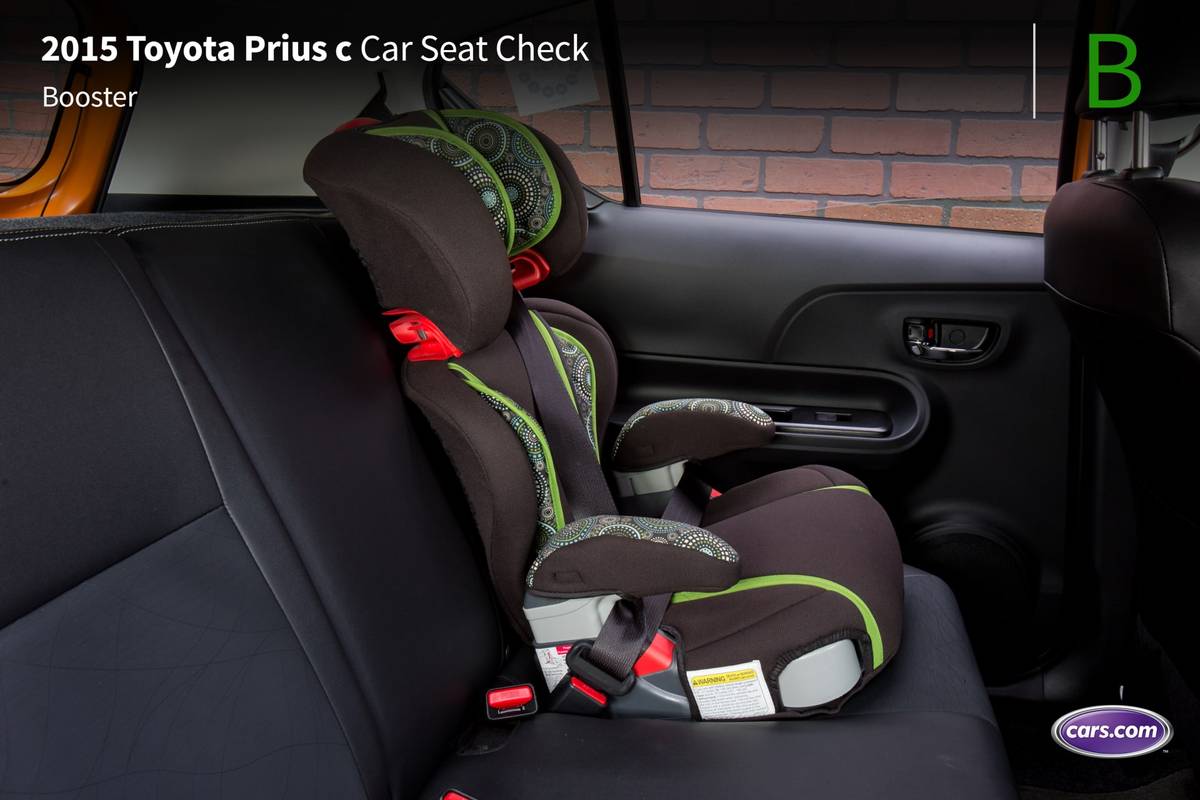
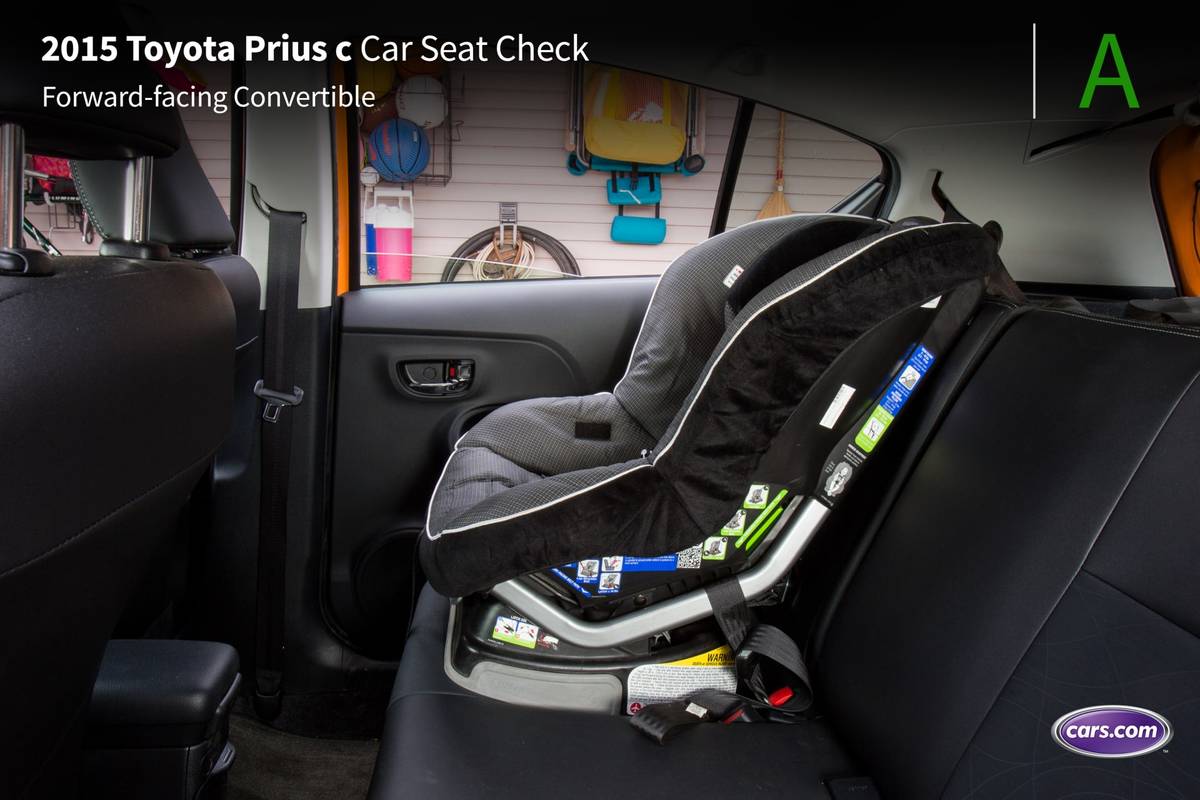





Grading Scale
A: Plenty of room for the car seat and the child; doesn’t impact driver or front-passenger legroom. Easy to find and connect to Latch and tether anchors. No fit issues involving head restraint or seat contouring. Easy access to the third row.
B: Plenty of room. One fit or connection issue. Some problems accessing third row when available.
C: Marginal room. Two fit or connection issues. Difficult to access third row when available.
D: Insufficient room. Two or more fit or connection issues.
F: Does not fit or is unsafe.
About Cars.com’s Car Seat Checks
Editors Jennifer Geiger and Jennifer Newman are certified child safety seat installation technicians.
For the Car Seat Check, we use a Graco SnugRide Classic Connect 30 infant-safety seat, a Britax Marathon convertible seat and Graco TurboBooster seat. The front seats are adjusted for a 6-foot driver and a 5-foot-8 passenger. The three child seats are installed in the second row. The booster seat sits behind the driver’s seat, and the infant and convertible seats are installed behind the front passenger seat.
We also install the forward-facing convertible in the second row’s middle seat with the booster and infant seat in the outboard seats to see if three car seats will fit; a child sitting in the booster seat must be able to reach the seat belt buckle. If there’s a third row, we install the booster seat and a forward-facing convertible. To learn more about how we conduct our Car Seat Checks, go here.
Parents should also remember that they can use the Latch system or a seat belt to install a car seat, and that Latch anchors have a weight limit of 65 pounds, including the weight of the child and the weight of the seat itself.

News Editor Jennifer Geiger joined the automotive industry in 2003, much to the delight of her Corvette-obsessed dad. Jennifer is an expert reviewer, certified car-seat technician and mom of three. She wears a lot of hats — many of them while driving a minivan.
Featured stories
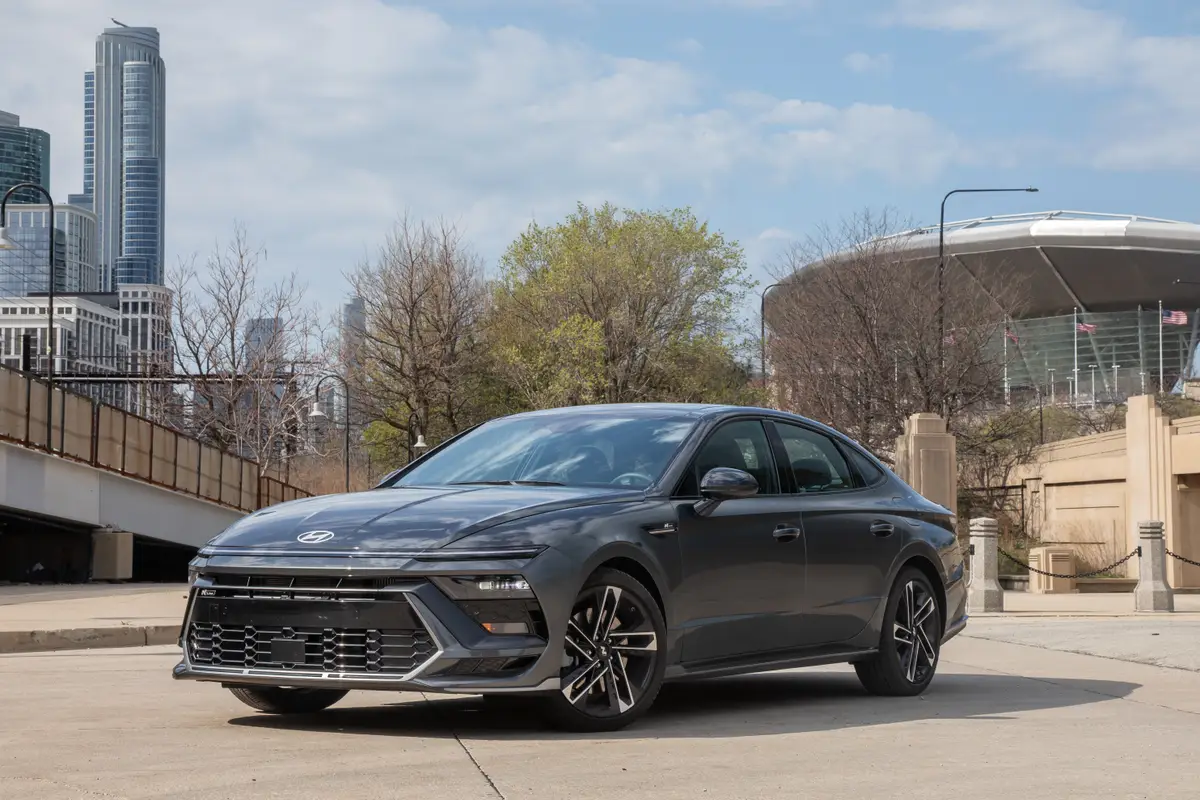
2025 Hyundai Sonata N Line Review: Banish Boring

